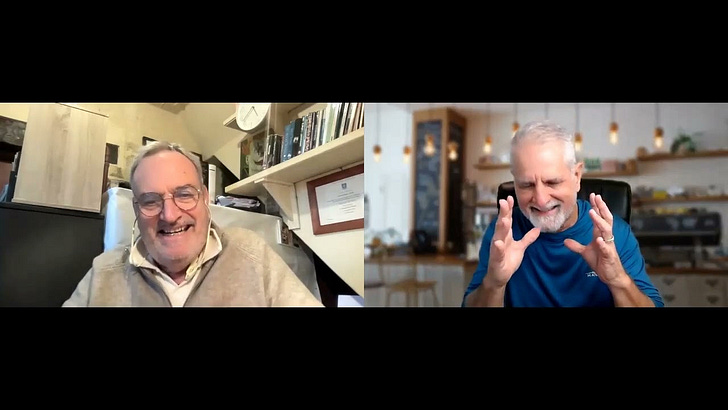THE MAN WHO FELL TO EARTH
What if you were to see the Son of Man ascending to where he was before? John 6:62, ESV

The polarity of Jesus’ ministry – a movement away from power and towards humility – is expressed in a hymn or liturgy of the earliest churches, cited by Paul in his letter to the Philippians:
Have this mind among yourselves, which is yours in Christ Jesus, who, though he was in the form of God, did not count equality with God a thing to be grasped, but emptied himself, by taking the form of a servant, being born in the likeness of men. And being found in human form, he humbled himself by becoming obedient to the point of death, even death on a cross. Therefore God has highly exalted him and bestowed on him the name that is above every name, so that at the name of Jesus every knee should bow, in heaven and on earth and under the earth, and every tongue confess that Jesus Christ is Lord, to the glory of God the Father (Phil. 2:5-11, ESV).
Where we’re told in verse 7 that he ‘emptied himself’ the Greek word is kenosis, used in the verb form kenóō. The same verb isused elsewhere in the New Testament where it refers, for example, to faith that is emptied of its meaning: ‘If those who are of the law are heirs, faith is made empty and the promise is cancelled’ (Rom. 4:14, Holman Christian Standard Bible: my italics). In 1 Corinthians, Paul writes that ‘Christ did not send me to baptise but to preach the gospel, and not with words of eloquent wisdom, lest the cross of Christ be emptied of its power’ (1 Cor. 1:17, ESV). In a second letter, he tells this same church, ‘I am sending the brothers, so that our boasting about you may not prove empty in this matter’ (2 Cor. 9:3, ESV). ‘Emptied himself’, then, is an accurate and reliable translation for kenosis – but what does it mean?
The hymn asserts that Jesus is, from beginning to end, equal with God, and yet in becoming human, he places humility at the centre of his identity and mission. Not only is he ‘born in the likeness of men’, he also comes ‘in the form of a servant’ and humbles himself further, to the point of death, even – most degrading of all – death on a cross. Each of these actions takes Jesus lower in status, like steps leading down into a cellar, until he comes to the lowest possible place. Crucifixion was reserved for the most base offenders. It was not only a form of execution but at the same time an act of public humiliation. Once you’ve been nailed to a Roman cross, there is nowhere lower for you to go. This is the measure of Christ’s self-emptying, like a cloth that is not just hung out but is wrung dry, every last drop of moisture squeezed from it.
When this act of self-emptying is set against the passion with which Paul and the other apostles defend Jesus’ heavenly exaltation, it is clear that it cannot mean the loss or abandonment of divinity. Jesus does not give up his identity as God. What it does imply is his choice not to avail himself of the privileges associated with his divine status and to identify, instead, with the humblest among us. The New Revised Standard Version tells us that Jesus ‘did not regard equality with God as something to be exploited.’ The New International Version expresses it as he ‘did not consider equality with God something to be used to his own advantage.’ All are reaching for the sense that kenosis does not describe Jesus’ being stripped of his divine nature, but indicates rather an intentional and deliberate decision not to lean on the super- powers associated with it. Jesus refuses to carry a get-out-of- jail-free card. The hymn couldn’t be more clear in recognising that Jesus has embraced humanity in all its weakness and frailty. ‘God descends to re-ascend,’ C. S. Lewis writes, ‘He comes down; down from the heights of absolute being into time and space, down into humanity …down to the very roots and seabed of the nature he has created. But he goes down to come up again and bring the ruined world up with him.’
Students of scriptwriting and storytelling often refer to the idea of ‘The Hero’s Journey’ to describe a structure as common to ancient myths as to modern scripts. Elements of the pattern include departure and return, trial and triumph, death and resurrection – the hero or heroine leaves behind a ‘normal’ life to set out on a great adventure, where they face a terrible and life-threatening trial in which it appears that all is lost, until ultimately, they overcome all odds to return in triumph. Think of the hobbit Bilbo Baggins, setting out from the Shire to unimaginable adventures only to return, triumphant and much changed by his journey.
The hymn of Philippians 2 suggests that the incarnation is the ultimate hero’s journey. It describes all that Jesus has done for us and for our salvation. It includes the cruelty of his death – that decisive moment in which his willingness to suffer in our place and for our freedom reaches its most painful, testing climax – but it sets this in the wider context of the journey he has taken. His sacrifice does not begin with his trial before Pilate, it is set in motion already: by his willingness to leave his Father’s side; to set aside privilege and power; by his birth among the anawim of Nazareth; his hidden life of patient obedience; his resistance to the lies and wiles of the enemy; his demonstration of the Spirit’s power; his death in my place; his resurrection and ascension; his intercession, even now, on my behalf. All these actions are included in the phrase ‘This is what Jesus has done for me.’
We sometimes explain this on the Seven Stories course by saying it is good to say, ‘Jesus died for me,’ but we must learn also to say, ‘Jesus was born for me; Jesus lived for me; Jesus obeyed the Father for me; Jesus died and rose again and ascended to the throne of heaven… for me.’ Wesleyan scholar Thomas H. McCall explains that, ‘Drawing on an ancient theological insight, we can say that in becoming human the divine Son of God ‘recapitulates’ (or ‘re-heads’) humanity. The incarnation is itself redemptive, and it is his entire life, death, and resurrection (as well as his ascension and session – Jesus being seated at the right hand of the Father in heaven) that brings salvation to us.’
This is the epic tale that the early Christians told. If the Philippians passage is indeed a primitive liturgy, it is as close as we are going to get to a creed of the first churches, the earliest statement of faith we can access. It captures the sheer wonder, the awe with which these first believers reflected on all Jesus had done for them. He was, in every possible sense, their hero. The shape of this ‘kenotic’ journey – this pattern of descent and re-ascent, of departure and return – is also suggested in the episode in John’s Gospel in which Jesus washes the feet of his disciples. John writes,
Jesus, knowing that the Father had given all things into his hands, and that he had come from God and was going back to God, rose from supper. He laid aside his outer garments, and taking a towel, tied it around his waist. Then he poured water into a basin and began to wash the disciples’ feet and to wipe them with the towel that was wrapped around him … When he had washed their feet and put on his outer garments and resumed his place, he said to them, ‘Do you understand what I have done to you? You call me Teacher and Lord, and you are right, for so I am. If I then, your Lord and Teacher, have washed your feet, you also ought to wash one another’s feet. For I have given you an example, that you also should do just as I have done to you’ (John 13:3-5; 12-15, ESV).
Jesus’ physical movements match the pattern described in Philippians 2. The removal of his outer garment mirrors the setting aside of privilege and power. He takes the place of a slave and kneels before each of his disciples in turn, before rising to put on his robe again and return to his place. He is enacting the journey of kenosis, demonstrating to his disciples what he has done, and what he hopes they, too, will learn to do. Self-emptying is central to Jesus’ whole identity and purpose.
I was once asked to teach on the theme ‘Follow the Footwasher’, based on the events of John 13. I ran through the story and wondered out loud how it must have looked to see Jesus kneeling before each of the disciples as he moved through the room to wash their feet. We made the link, as we have done here, to the Philippians 2 hymn. This was when something strange and unexpected happened. I read from Philippians, ending on the words: ‘Therefore God has highly exalted him and bestowed on him the name that is above every name, so that at the name of Jesus every knee should bow, in heaven and on earth and under the earth, and every tongue confess that Jesus Christ is Lord, to the glory of God the Father (Phil.2:9-11, ESV: my italics).
Even as I was reading these words, a stray thought in my head was fighting for my attention. ‘Wait a minute,’ it said, ‘this sounds familiar. Haven’t we just said something about kneeling?’ I was puzzled for a moment, and then saw the connection – it was to the description I had just given of Jesus, kneeling before each of his friends. This resulted in a conclusion to my talk I had neither planned nor anticipated. I found myself saying, ‘In the end, you will kneel before Jesus because he has knelt before you.’ It was one of those occasions when I was learning new things from the very act of speaking. As French essayist Joseph Joubert wrote, ‘To teach is to learn twice.’ This is why every knee will bow – not simply because Jesus is God, the second person of the Trinity, but because he has come to us, as one of us, and has won our hearts through service and self-giving love. It is when the universe at last sees the magnificence of the humility of Jesus that we will, one and all, take the knee.
Thanks for reading… The full book is now available in Hardcover, Paperback or Kindle ebook from Amazon and in ebook from Apple Books. Bookshop orders can be placed with Ingram







